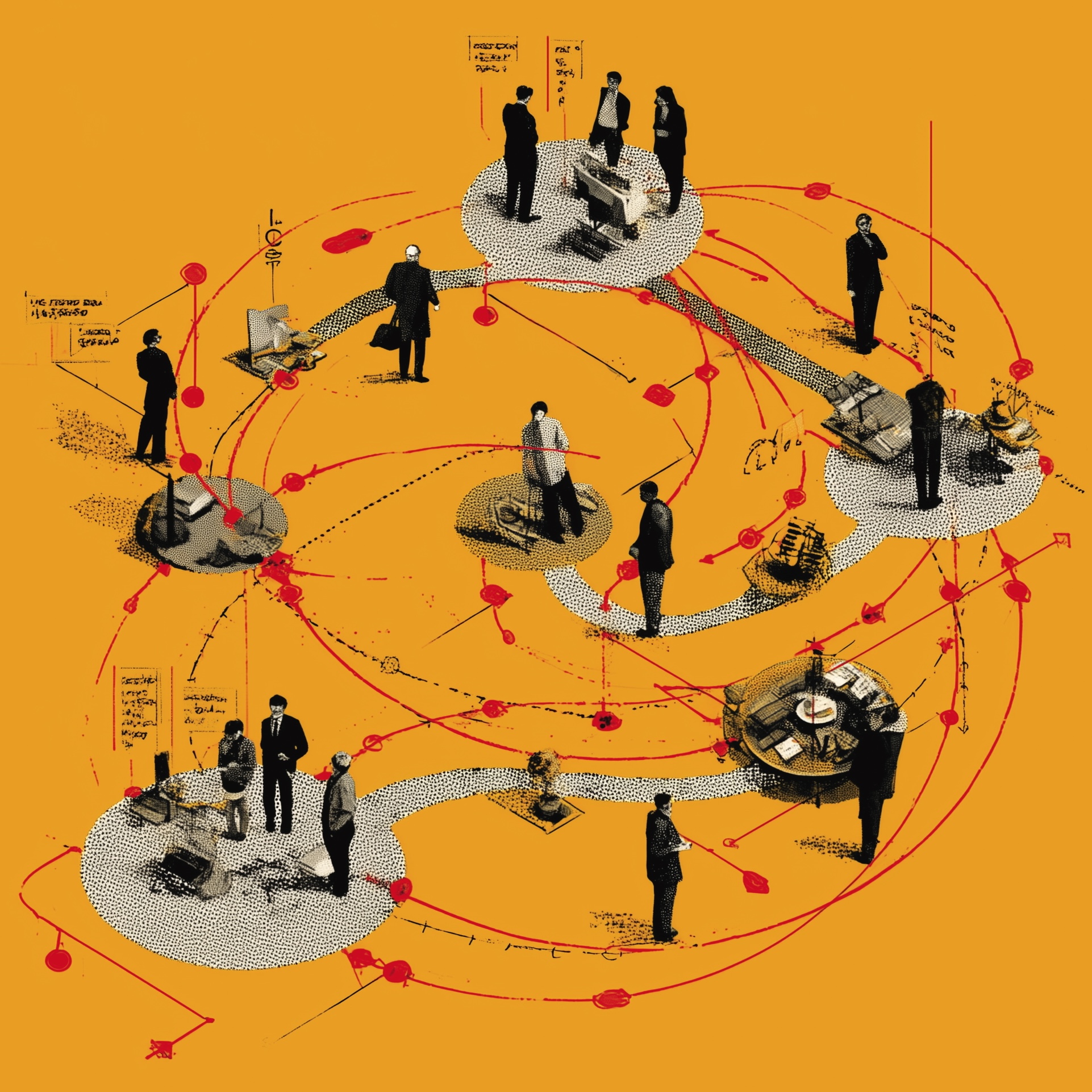Transformation on the go
How Birmingham and Solihull united the whole health and care system around a common purpose: fighting the pandemic while keeping services running.

For Paul Sherriff, the greatest risk facing Birmingham and Solihull’s primary care system as COVID-19 bore down on the city in February and March, was clear: “That it would fall over!” Government was putting out some “very scary numbers around how many people could become unwell,” recalls Sherriff, director of partnerships at Birmingham and Solihull Clinical Commissioning Group (CCG): GPs expected to see “unprecedented demand in terms of clinical need” and a “significant loss of workforce” as staff fell ill or went into isolation.
Given the shortage of tests and PPE, says the CCG’s deputy chief medical officer, Will Taylor, “there was a real risk that GP practices could have gone under and not been able to operate” – pushing more patients towards the hospitals. “Primary care had to step up to protect secondary care,” comments Taylor. The CCG urgently needed a way to continue providing routine services while protecting both patients and staff from infection, safeguarding PPE supplies and building a system capable of handling the anticipated tidal wave of COVID-19 patients.
“The first thing we did was open up an immediate conversation with general practice, and agree a clinical operating model,” says Sherriff. This plan, adds Taylor, was based on one introduced by “a small group of practices that did it on their own”: designating one practice as a ‘red site’ for patients suspected of having COVID, they provided routine services at other sites and shielded vulnerable staff in a building with no public access. “So we put that system in across primary care networks, with practices working in collaboration,” he explains. “It was [built] ground up out of general practice, with GPs suggesting the model and spreading it across the city.”
Moving at pace
To roll out these changes at pace, the CCG needed to “work without the usual bureaucracy,” Taylor adds. “We had to safely find ways of making decisions quickly, with due diligence happening concurrently rather than consecutively.” The CCG’s governing body “gave executives greater authority to make decisions,” says Sherriff, “recognising that they had a need to move things on that pre-existing governance arrangements might not have supported.”
Equally important was the foundation of city-wide relationships and strategic decision-making built up over recent years – particularly since the formation of Birmingham and Solihull’s giant CCG. “The collaborative working between primary care networks also helped,” notes Taylor. And an IT system, built to link practices to the ‘Extended Access Hubs’ providing evening and weekend appointments, was another essential piece of the jigsaw: reshaped to connect practices, “it was a godsend,” he says. “Without it, we’d have had to see patients without full medical records, which creates risk.”
Under the new service model, most of Birmingham and Solihull’s 210 primary care sites were given a ‘traffic light’ designation, explains Sherriff: “We consolidated our services behind digital and telephone management: everything was triaged first, and then GPs risk-stratified patients.” So remote triaging work was run out of the ‘green’ sites; ‘purple’ sites provided planned care, such as antenatal services and wound treatment; and ‘amber’ sites saw other patients believed not to have COVID.
While the model required practices to ‘share’ patients, working as a single system rather than individual businesses, few GPs expressed concerns about financial matters: “A lot of practices just wanted to get on with it,” says Taylor. “We all knew we could be at risk, so it was an investment; an insurance policy.” Underwriting that insurance policy, the CCG also commissioned four call centres to serve the patients of any practice that ran out of staff and had to close. Meanwhile, four separate home visiting services were set up – serving the housebound, the shielding and those with COVID symptoms.
Rallying round
When people called in reporting COVID symptoms, they were referred to the ‘red’ site. The brainchild of consultant surgeon and healthcare systems engineering specialist Simon Dodds, this was a 12-lane drive-through facility at the NEC conference centre. Remarkably, the whole site was constructed over Easter weekend, recalls Tom O’Sullivan, the chief executive of local practice GPS Healthcare, who – using skills learned in a previous career in retail management – was seconded to the site as operational service director. “The design team, the builders, the venue and [consultancy firm] KPMG were all fantastic. It was a huge effort; we had factory owners manufacturing bespoke items,” he recalls. “There’s a lot of fragmentation in our society these days, and to see people rallying round really gave me a sense of immense pride in what we can achieve when we work collectively.”
The red site was designed to “manage what could have been a really significant volume of patients and to take pressure off the system,” O’Sullivan explains. “If we hadn’t had the facility, a lot of that traffic could have ended up in A&E or the ambulance system.” West Midlands Ambulance Service brought in patients who couldn’t drive themselves, and those who needed a full examination were seen in a facility constructed within the NEC building.
The red site was staffed by Badger Group: a local social enterprise which, in normal times, operates two urgent treatment centres and provides out-of-hours primary care across the city. Badger doubled its clinical workforce, explains its medical director Fay Wilson, paying those Advanced Nurse Practitioners (ANPs) who had the full range of primary care skills the same rate as doctors. “That caused huge ructions,” she comments. “But we have a very flat pay structure; I’m paid the same salary. And on this site, ANPs were expected to operate at the same level as the doctors.”
Protecting staff
As well as minimising infection risk, the traffic light system enabled the CCG to “concentrate PPE supplies on a few sites, which made distribution easier and use as efficient as possible,” explains Taylor. This was essential, comments Sherriff, because “the supply chain could not cope with demand at all. Our pre-existing reserves disappeared almost immediately, and supplies dried up.”
Primary care wasn’t prioritised by government for the distribution of PPE, he explains, but University Hospitals Birmingham showed “fantastic partnership and leadership”, giving the CCG access to NHS supplies and the trust’s own procurement network. “Had we not had their support, we’d have been really struggling. We never ran out or had to shut a site, but we sailed close to the wind,” says Sherriff.
Meanwhile, a Badger Group staff association collected money from the public and materials from local firms, teamed up with volunteer sewing teams, and produced large amounts of PPE – improving the kit available to red site workers. This “had a profound effect on the staff,” comments Wilson, ensuring that they “felt safe to treat patients”. And it was just as important that patients felt safe: “People were petrified about going indoors, so we moved the entire operation out to the car park,” she says. “Once people knew they could stay in their cars, they were quite happy to come.”
’Do something different’
When COVID’s first wave tailed off, recalls Wilson, “we found we had spare capacity, so we started to see other patients”: drivers were triaged on arrival, then diverted to red or green lanes. And having moved out of its internal NEC site, the CCG opened it up to the trusts – enabling them to restart nearly 90 outpatient services while their hospital buildings focused on COVID patients. It was important to “do something different, and not have patients waiting in pain,” comments Wilson. “Routine orthopaedics is so important to people’s quality of life.”
Eventually, the NEC site was closed: if a second wave arrives, explains Taylor, the CCG will open a number of red sites across the conurbation. “There was some reluctance among patients to travel across the city to the NEC,” he says. “Having a single site was right at the time – we needed something quickly – but now we’ve got the time to provide more convenient, local red sites.”
Meanwhile, the traffic light system remains in place, with most patients being seen remotely: looking ahead, notes Sherriff, “we’ll see far greater use of telephone and video consultations. COVID will leave us with a different operating model, so we won’t need the same number of sites or the same kind of estate. Working through that is going to be a real challenge.” But Taylor is clear that, while the shift to remote consultations will not be unwound, it’s important that GPs start seeing patients in person again – addressing pent-up demand displaced by the pandemic, and strengthening personal connections. The “therapeutic relationship with your patient” is “the bedrock of general practice”, he says; and those relationships can’t be built remotely.
An enduring legacy
In the end, the first wave of COVID didn’t reach the tsunami-like heights forecast by the government: only a couple of the red site’s 12 lanes were required, and the phones never rang at the CCG’s back-up call centres. But like the Nightingale hospital — also housed at the NEC – the infrastructure was essential to guard against a worst-case scenario. For Paul Sherriff, a military liaison officer summed it up well: “He said, ‘The British Army is an insurance policy, and an expensive one. You pray you never need it – but if you do, you’re glad you’ve got it!’ If we’d needed those services and not had them, we’d have failed the public.”
Birmingham and Solihull’s system proved effective in safely maintaining primary care throughout the outbreak: every service and practice remained open, while no staff member caught COVID at the red site. And the wholesale transformation of care provision will leave an “enduring legacy”, says Sherriff: “There’s always a level of tension between primary and secondary care, but under COVID we found a health and care system united in a common purpose. Any historical or contractual issues were put to one side, as everyone concentrated on meeting patients’ needs and keeping staff safe. It brought out the very best in people and organisations; one of the next challenges is to ensure that we don’t rebound to old behaviours.”
And for Wilson, there’s another equally important lesson: “We don’t need to sit passively and wait for the NHS to tell us what to do and to pay for it,” she concludes. “I’m sitting in my office, surrounded by boxes of scrubs made for us by volunteers. We’re not helpless; if we look to each other, we can make things happen.”
Related News
-

NHS job cuts: you’ll never walk alone
As the NHS redundancies in England loom, Rhys McKenzie explains how MiP will back you, and how members supporting each other and acting collectively is the best way to navigate this difficult process.
-

What now? Seven expert takes on the Ten-Year Plan
The government’s Ten-Year Plan for the NHS in England has met with enthusiasm and exasperation in equal measure. We asked seven healthcare experts to give us their considered view on one aspect that interests, excites or annoys them.
-

NHS job cuts: what are your options?
When politicians start reforming the NHS, there is only one certainty: some people will lose their jobs. But what options might be on the table and how does redundancy work? Corrado Valle explains.